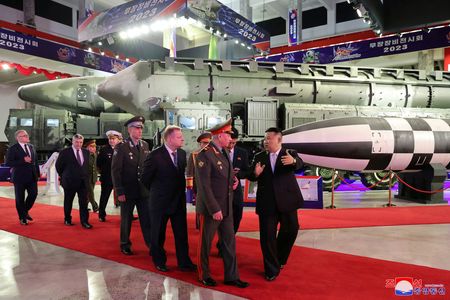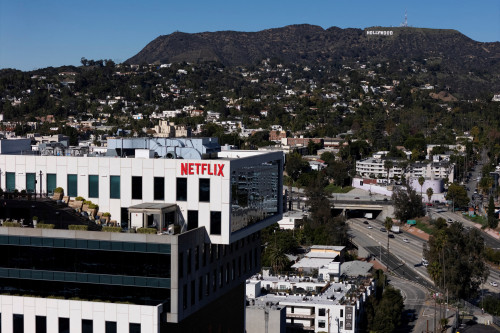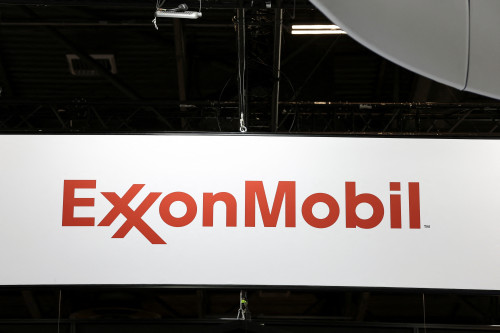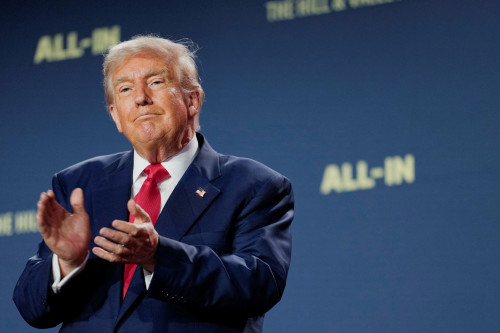By Josh Smith, Trevor Hunnicutt and David Brunnstrom
SEOUL/WASHINGTON (Reuters) -North Korea’s latest Hwasong-18 intercontinental ballistic missile – its first ICBM to use solid rocket fuel – has reignited debate over possible Russian links to the nuclear-armed state’s dramatic missile development.
In a report published on Thursday by the Washington-based Center for Strategic and International Studies, Theodore Postol, professor emeritus at the Massachusetts Institute of Technology, argued that the Hwasong-18 ICBM is likely the result of technical cooperation sourced to Russia.
The Hwasong-18 has been tested twice, including on July 12 in what was the longest flight time ever for a North Korean missile test.
It is the North’s first ICBM to use solid propellants, which can enable faster and easier deployment of missiles during war. The missile was first flown in April.
“The sudden appearance of these advanced capabilities is difficult to explain without cooperation from the Russian government and its scientists,” Postol wrote, saying visual similarities suggest Russia may have decided to transfer an “advanced 50-ton solid propellant ICBM, the Topol-M, also known as the SS-27”, to North Korea.
Other analysts, however, said that while North Korea’s missiles show similarities with Russian designs, they are not exactly the same and Pyongyang has several ways of gathering technical data from other countries, including computer hacking.
Researchers at California’s James Martin Center for Nonproliferation Studies (CNS) in a draft report shared with Reuters, pointed to what they called factual inaccuracies, including mistaking the Russian Topol-M and Yars ICBMs, and misidentifying a spent Hwasong-18 rocket stage as a “decoy canister” designed to defeat anti-missile systems.
Asked about those concerns, Postol called them “unsupported assertions”, saying in an email that his critics had not provided him with any technical evidence to comment on.
‘TAKING A HARD LOOK’
Russia and North Korea have recently called for closer military ties but North Korea has denied having any “arms dealings” with Russia.
Russia’s foreign ministry did not immediately respond to the new report.
In response to recent allegations from a U.N. Panel of Experts that entities in Russia were procuring items for North Korea’s missile programme, Russia denied any knowledge or information on transactions that would breach sanctions on North Korea.
Speaking ahead of a Camp David summit of the United States, Japan and South Korea, White House national security adviser Jake Sullivan said the administration of President Joe Biden was concerned about potential missile cooperation between Russia and North Korea but he was “not validating the report.”
“In terms of this specific report… I don’t have anything to add to that today. I will say it’s something our intelligence community is taking a hard look at,” he said.
Sullivan said Russia had been seeking material for its war in Ukraine from North Korea “and as they have done with other countries like Iran, when they ask, they usually also offer some types of security cooperation in return.”
“I’m not asserting that that is the case today,” he said. “I am saying it is a matter of concern.”
RUSSIAN ROOTS
The CNS researchers said the Hwasong-18 clearly takes some design inspiration from Russian missiles, in this case Topol-M and Yars, just as many other North Korean missiles do.
“We do not rule out the possibility that Russian entities may have assisted North Korea in its development of this system,” they wrote.
However, a close examination of images, videos and the performance of the missile shows clear differences that exclude the possibility that Russia transferred a complete ICBM system, they concluded, citing major differences in the guidance systems and the missiles’ third stages, the researchers wrote.
Some of the Hwasong-18’s systems, in fact, more closely resemble Chinese weapons, and North Korea has been publicly developing solid-fuel missiles since at least 2017, they said.
Markus Schiller, a Europe-based missile expert who has long argued that North Korea’s success in testing suggests it has had external support, agreed the CSIS report “gets many issues blatantly wrong.”
However, he said, those mistakes should not overshadow the signs that point to possible Russian links, including similar motor diameters and missile configuration, as well as the 100% test success rate, suggesting the missile used well-established technology as North Korea fired it on a trajectory that – had it failed – could have dropped debris on Japan.
“You simply don’t take such a risk with an untested missile,” he said.
North Korea’s missile programme has its roots in assistance from the Soviet Union, and later Russia, analysts say, and the boosters involved in propelling the warheads are similar to Soviet designs.
However, there is debate over how much that assistance has continued since the 1990s, and North Korea has many ways of gathering information about other countries’ technology.
For example, a group of North Korean hackers secretly breached computer networks at a major Russian missile developer for at least five months last year, according to technical evidence reviewed by Reuters and analysis by security researchers.
(Reporting by Josh Smith; Additional reporting by David Brunnstrom in Washington; Editing by Robert Birsel, Hugh Lawson, Don Durfee and William Mallard)





